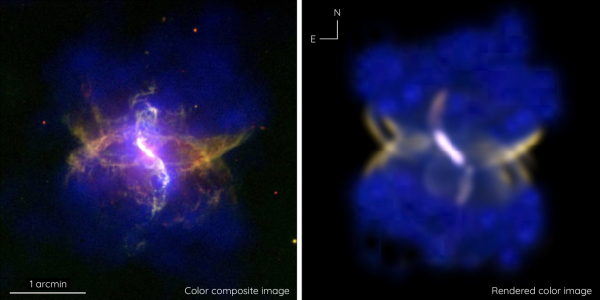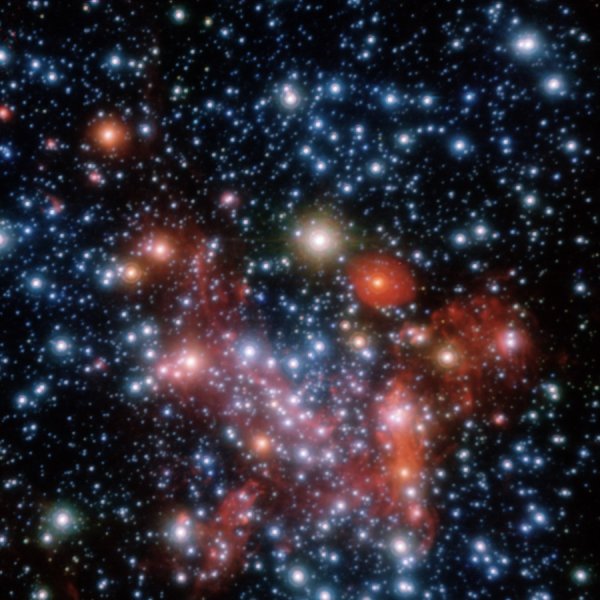Stars remain bright points even when observed with the largest telescopes. But some processes create strange structures of gas and dust around these stars. One such star is R Aquarii, the closest symbiotic binary star to us. Tiina Liimets from the Stellar Department was part of a team that uncovered the history of the strange nebula formations in the immediate vicinity of this star.
ABSTRACT
We present an analysis of high-dispersion spectroscopic observations of the symbiotic system R Aquarii (R Aqr) obtained with the Manchester Echelle Spectrograph (MES) at the 2.1 m telescope of the San Pedro Mártir Observatory (Mexico). An interpretation of these data is presented by means of the shape software to disclose the morpho-kinematics of the nebulosities associated with R Aqr. The best model that reproduces narrow-band images and position-velocity diagrams is composed by three structures: an outer (large) hourglass structure surrounding an inner bipolar with a spiral-like filament entwined around the later. Different expansion velocity patterns are predefined for each structure, which predict kinematic ages of 𝜏1=450±25 yr (outer hourglass), 𝜏2=240±20 yr (inner bipolar) and 𝜏3=215±20 yr (spiral-like filament). We suggest that the spiral-like filament is tracing the regions of interaction of the precessing jet with the circumstellar material, which simultaneously carves the inner bipolar structure. If a similar process created the large hourglass structure, it means that the action of the jet ceased for about 230 yr. We discuss the implication for other unresolved symbiotic systems detected in X-rays.

Press Release on ASU web page (in Czech)
More informations
- Press Release: Na čem pracujeme: Všechny tvary mlhoviny v okolí R Aquarii (M. Švanda, web ASU; in Czech)
- E. Santamaría, J. A. Toalá, T. Liimets a kol., Shaping the nebula around the symbiotic system R Aquarii, Montly Notices of the Royal Astronomical Society, preprint arXiv:2404.17710
- contact: Dr. Tiina Liimets, Ph.D., tiina.liimets@asu.cas.cz



